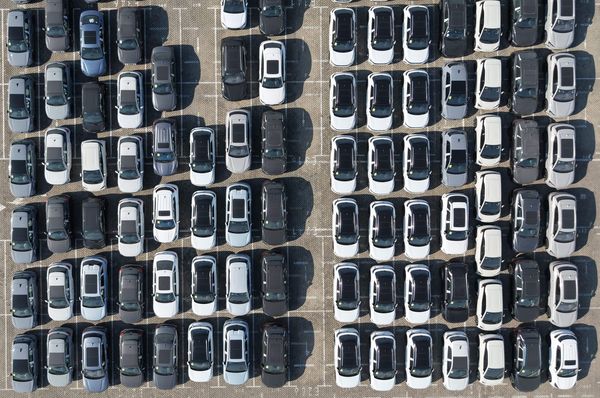For the first time, Apple’s most exciting new iPhone is its cheapest. Launched alongside the premium iPhone XS and eye-wateringly expensive iPhone XS Max, the iPhone XR appears to retain their best features for a much lower asking price. So is this the perfect upgrade, or are there problematic differences which you should avoid?
Here’s everything you need to know…

Displays – Bigger, But Not Better
Perhaps the most surprising difference between the iPhone XS and iPhone XR is it’s the latter which has the bigger display. That said, everything else about the iPhone XR’s screen is inferior:
- iPhone XS – 5.8-inch OLED, 19.5:9 aspect ratio, True Tone, 2436 x 1125 pixels (458 ppi), 1,000,000:1 contrast ratio, 82.9% screen-to-body ratio,
- iPhone XR – 6.1-inch LCD, 19.5:9 aspect ratio, True Tone, 1792 x 828 pixels (326 ppi), 1,400:1 contrast ratio, 79.0% screen-to-body ratio
As you’ll see above, the big compromises with the iPhone XR are its downgrade from OLED to LCD and a substantially lower native resolution. In fact, the iPhone XR can’t even display Full HD 1080p content – that’s surprising for a 6.1-inch device.
In addition to this, the iPhone XR is not Dolby Vision / HDR10 compliant and it lacks the pressure sensitive 3D Touch technology which has been a part of the iPhone range since the iPhone 6S.
So should you care about all this? In reality, no.

LCD displays may not match OLED in terms of contrast ratio and black levels, but they are more than good enough for the vast majority of users. The lower 326 ppi (identical to the iPhone 8) is still 3x higher than a 40-inch 4K television (110 ppi), and you’ll still get the same 19.5:9 aspect ratio as the iPhone XS, the same True Tone colour accuracy and “120Hz touch sensing” for a faster response to touch input.
As for the absence of 3D Touch, iOS 12 has enabled a long press to replace most of its functions and the technology is expected to be axed next year anyway due to a lack of consumer interest. So while the display is one of the biggest technical differences between the iPhone XS and iPhone XR, in a side-by-side comparison I’m not convinced most users will care.
Read more – iPhone XS Vs iPhone XS Max: What’s The Difference?
Design – Similar, But Downgraded
At first glance, aside from their physical sizes, the iPhone XS and iPhone XR look identical. But they aren’t.
- iPhone XS – 143.6 x 70.9 x 7.7 mm (5.65 x 2.79 x 0.30 in) and 177g (6.24 oz)
- iPhone XR – 150.9 x 75.7 x 8.3 mm (5.94 x 2.98 x 0.33 in) and 194 g (6.84 oz)
While the iPhone XR has roughly a 5% larger display than the iPhone XS, it is 10% heavier and slightly thicker. The primary reason for this is the LCD display, which is not as flexible as OLED so it cannot fit as seamlessly into the chassis (look for the larger bezels on all sides of the iPhone XR display).

The iPhone XS also has a stainless steel chassis which has a slightly more premium feel than the 7000 Series aluminium of the iPhone XR (used in the iPhone 8 and older) and you get IP68 water resistance from the iPhone XS and IP67 water resistance on the iPhone XR.
Should you care? Again, I don’t think so.
Some will not like the iPhone XR’s thicker bezels, but they are still thinner than many OLED rivals. Likewise, aluminium feels great in hand and IP68 simply means the phone can be submerged for up to 30 minutes in two metres of water, not one metre. These are not deal breakers for most people.
Where the two iPhones match, however, is more tangible.

Both get 25% louder external speakers (which also add stereo left and right channels), and dual sim support courtesy of a physical nano sim and internal eSIM so owners can run work and home or home and travel sims in a single device. No iPhone has offered this before.
Interestingly, the iPhone XR also comes in a much wider and more interesting range of colours – White, Black, Blue, Yellow, Coral, (PRODUCT)RED – than the iPhone XS which is limited to Silver, Space Grey and Gold and looks identical to last year’s iPhone X.

From a head-turning perspective, the iPhone XR is simply more interesting.
Performance – Rocket Sleds
Remarkably, the iPhone XR runs the same cutting-edge chipset as the iPhone XR:
- iPhone XS, iPhone XR – Apple A12 ‘Bionic’ chipset: Six-Core CPU, Four-Core GPU, M12 motion coprocessor
The difference is the iPhone XS comes with 4GB of RAM while the iPhone XR has 3GB. This will provide a slight improvement in multitasking, as more apps can be held in memory without needing to reload. But primarily the extra RAM is needed for the iPhone XS’s dual camera (more in the next section) and no-one thinks last year’s iPhone X (3GB) is slow.

As for what the Apple A12 (‘Bionic’ is just marketing nonsense) brings to the table, you’ll get 50% leaps in graphics performance and power efficiency when idle, as well as a 15% boost in peak CPU performance. The increases are welcome, but Apple is so far ahead of the pack here (the 2017 iPhone X is faster than every 2018 Android phone), they are hardly needed.
Both new iPhones also a nice touch: tiny power reserves so NFC transactions can be completed even when the phones have run out of battery. A unique feature to this year’s models.
Elsewhere, the big news is both iPhones have support for 600 MHz 4G bands. 600MHz is used by carriers to cover wide areas which were previously without signal and, until now, iPhones were not compatible with it. So this alone, quite literally, opens up a whole new audience of potential buyers.
The iPhone XR does miss out on the iPhone XS’s new 4G Cat 16 LTE speeds (capable of one-gigabit downloads) but in reality, its Cat 12 600Mbit performance is more than you need. So while Apple is lagging behind with 5G support, anyone getting such fast speeds on 4G is unlikely to care.
Cameras – Single Vs Double

Aside from their difference display sizes, the second most externally recognisable difference between the iPhone XS and iPhone XR is the latter only has a single rear camera:
- iPhone XS, iPhone XR – Primary rear camera – 12MP, f/1.8 aperture, 1.4µm pixel size, Optical Image stabilisation (OIS), Quad-LED True Tone flash, Portrait Lighting
- iPhone XS – Secondary telephoto lens – 12MP, f/2.4 aperture, 1.0µm pixel size, OIS, 2x optical zoom
- iPhone XS, iPhone XR – Front ‘TrueDepth’ camera – 7MP, f/2.2 aperture
The good news is all iPhone XR users miss out on is the 2x optical zoom. Yes, this is a handy feature but many times you can just walk closer to a subject. Meanwhile, previous iPhones required the second camera for Apple’s popular Portrait Mode but the iPhone XR can deliver it with both its single front and rear cameras.

Crucially, both new iPhones also support Apple’s new ‘Smart HDR’ image processing. This combines multiple photos taken at different exposures into a single image to combat the iPhone range’s historical weakness with dynamic range. This system is similar to HDR+ on Google Pixel 2, which (still) has the best phone camera on the market.

Like the Pixel 2, both the iPhone XS and iPhone XR primary rear cameras also have a larger 1.4µm pixel size which enables them to take in more light. This is a crucial upgrade for better low light photography and a win for both phones.
All of which means you should be noticing a pattern: the iPhone XR has another compromise compared to the iPhone XS, but it is probably one you can live with. Moreover, the XR has one big area where it easily outshines the XS…
Read more – iPhone XS Vs iPhone X: What’s The Difference?
Battery Life And Charging – Cheaper Lasts Longer
For those of you on the fence about the iPhone XR’s LCD display, here’s where it delivers considerable upsides: the lower resolution is far less demanding and the larger size means Apple has more space to fit a bigger battery.
- iPhone XS – 2,658 mAh
- iPhone XR – 2,942 mAh
The consequences of this are perhaps the biggest deal maker for the iPhone XR. It can outlast the iPhone XS in most areas by as much as 25%, and even the flagship iPhone XS Max:

One area where the iPhone XR misses out, however, is “faster” wireless charging. As with its Face ID improvements, Apple hasn’t put a figure on this. It will be more than the 7.5W offered by the iPhone X and continued by the iPhone XR, but I doubt it comes close to the 15W capabilities of the Qi standard the phones use.
Lastly, a complaint.
Both the iPhone XS and iPhone XR support the same fast wired charging as the iPhone X (a 50% charge in 30 minutes from flat), but Apple has again declined to include a fast charger in the box. This is bad enough with the iPhone XR, but not to include one with the iPhone XS (while charging $75 for the necessary charger and compatible cable) is daylight robbery.
Storage And Price – XR Marks The Spot
Here is where the iPhone XR seals the deal:
- iPhone XS – 64GB ($999), 256GB ($1,149), 512GB ($1,349)
- iPhone XR – 64GB ($749), 128GB ($799), 256GB ($899)
While the $750 starting price makes headlines, the clear sweet spot is the 128GB iPhone XR for just $50 more and $200 less than a 64GB iPhone XS. 128GB is also a great storage option as the iPhone XS range appears to provide too little (64GB) then too much (256GB) for the average user.
Needless to say, some will be drawn to the monstrous 512GB iPhone XS, but being able to buy a 256GB iPhone XR with 4x the storage capacity of the 64GB iPhone XS for $100 less is hard to resist.

Bottom Line
With iPhone sales easily outstripping ever other brand, it seems the biggest threat to sales of the iPhone XS and iPhone XS Max (details here) is Apple’s own iPhone XR.
While Apple has chipped away at almost every part of the iPhone XS’s feature set to produce the XR, the reality is everything that’s lost is expendable. For some, there will be an essential feature missing (OLED display, dual camera, bezel size) that forces them to pay more for the iPhone XS, but for most buyers the iPhone XR is a well-priced phone with all the fat removed.
The iPhone XR is also a more practical phone, thanks to its significantly longer battery life, and a more eye-catching one, thanks to its wide array of colours. Those determined (or able) to live on the cutting edge can opt for the iPhone XS series but for everyone else, the iPhone XR is the model to buy. It’s the most interesting iPhone Apple has made in years…
___
Follow Gordon on Twitter, Facebook and Google+
More On Forbes
iPhone XS Vs iPhone XS Max: What’s The Difference?
iPhone XS Vs iPhone X: What’s The Difference?
iPhone 8 Vs iPhone 7 Vs iPhone 6S Vs iPhone 6: What’s The Difference?







